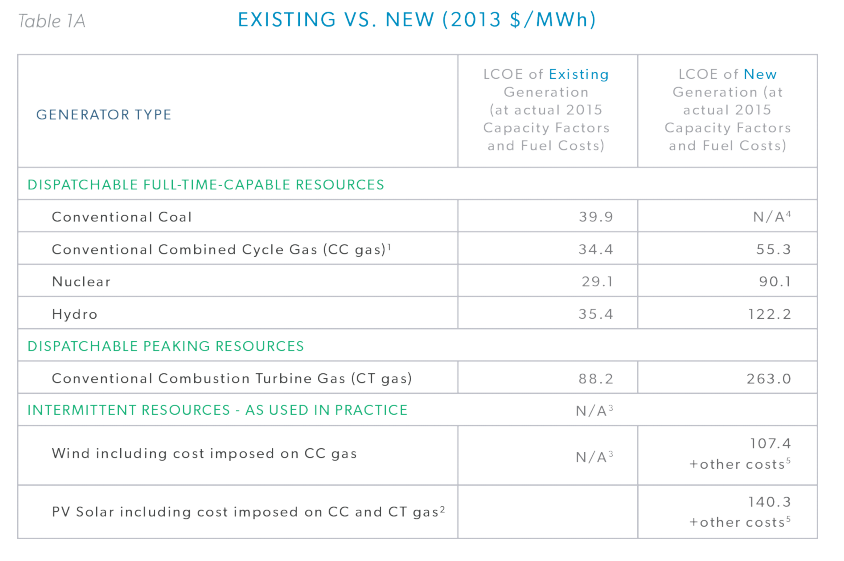Posted by Dr-Pete
It's been over two years since Google launched Featured Snippets, and yet many search marketers still see them as little more than a novelty. If you're not convinced by now that Featured Snippets offer a significant organic opportunity, then today is my attempt to change your mind.
If you somehow haven't encountered a Featured Snippet searching Google over the past two years, here's an example (from a search for "ssl"):

This is a promoted organic result, appearing above the traditional #1 ranking position. At minimum, Featured Snippets contain an extracted answer (more on that later), a display title, and a URL. They may also have an image, bulleted lists, and simple tables.
Why should you care?
We're all busy, and Google has made so many changes in the past couple of years that it can be hard to sort out what's really important to your customer or employer. I get it, and I'm not judging you. So, let's get the hard question out of the way: Why are Featured Snippets important?
(1) They occupy the "#0" position
Here's the top portion of a SERP for "hdmi cable," a commercial query:

There are a couple of interesting things going on here. First, Featured Snippets always (for now) come before traditional organic results. This is why I have taken to calling them the "#0" ranking position. What beats #1? You can see where I'm going with this... #0. In this case, the first organic is pushed down even more, below a set of Related Questions (the "People also ask" box). So, the "#1" organic position is really third in this example.
In addition, notice that the "#0" (that's the last time I'll put it in quotes) position is the same URL as the #1 organic position. So, Amazon is getting two listings on this result for a single page. The Featured Snippet doesn't always come from the #1 organic result (we'll get to that in a minute), but if you score #0, you are always listed twice on page one of results.
(2) They're surprisingly prevalent
In our 10,000-keyword tracking data set, Featured Snippets rolled out at approximately 2% of the queries we track. As of mid-July, they appear on roughly 11% of the keywords we monitor. We don't have good historical data from the first few months after roll-out, but here's a 12-month graph (July 2015 – July 2016):

Featured Snippets have more than doubled in prevalence in the past year, and they've increased by a factor of roughly 5X since launch. After two years, it's clear that this is no longer a short-term or small-scale test. Google considers this experiment to be a success.
(3) They often boost CTR
When Featured Snippets launched, SEOs were naturally concerned that, by extracting and displaying answers, click-through rates to the source site would suffer. While extracting answers from sites was certainly uncharted territory for Google, and we can debate their use of our content in this form, there's a growing body of evidence to suggest that Featured Snippets not only haven't harmed CTR, but they actually boost it in some cases.
In August of 2015, Search Engine Land published a case study by Glenn Gabe that tracked the loss of a Featured Snippet for a client on a competitive keyword. In the two-week period following the loss, that client lost over 39K clicks. In February of 2016, HubSpot did a larger study of high-volume keywords showing that ranking #0 produced a 114% CTR boost, even when they already held the #1 organic position. While these results are anecdotal and may not apply to everyone, evidence continues to suggest that Featured Snippets can boost organic search traffic in many cases.
Where do they come from?
Featured Snippets were born out of a problem that dates back to the early days of search. Pre-Google, many search players, including Yahoo, were human-curated directories first. As content creation exploded, humans could no longer keep up, especially in anything close to real-time, and search engines turned to algorithmic approaches and machine curation.
When Google launched the Knowledge Graph, it was based entirely on human-curated data, such as Freebase and Wikidata. You can see this data in traditional "Knowledge Cards," sometimes generically called "answer boxes." For example, this card appears on a search for "Who is the CEO of Tesla?":

The answer is short and factual, and there is no corresponding source link for it. This comes directly from the curated Knowledge Graph. If you run a search for "Tesla," you can see this more easily in the Knowledge Panel on that page:

In the middle, you can see an entry for "CEO: Elon Musk." This isn't just a block of display text — each of these line items are factoids that exist individually as structured data in the Knowledge Graph. You can test this by running searches against other factoids, like "When was Tesla founded?"
While Google does a decent job of matching many forms of a question to answers in the Knowledge Graph, they can't escape the limits of human curation. There are also questions that don't easily fit the "factoid" model. For example, if you search "What is ludicrous mode Tesla?" (pardon the weird syntax), you get this Featured Snippet:

Google's solution was obvious, if incredibly difficult — take the trillions of pages in their index and use them to generate answers in real-time. So, that's exactly what they did. If you go to the source page on Engadget, the text in the Featured Snippet is taken directly from on-page copy (I've added the green highlighting):

It's not as simple as just scraping off the first paragraph with a spatula and flipping it onto the SERP, though. Google does seem to be parsing content fairly deeply for relevance, and they've been improving their capabilities constantly since the launch of Featured Snippets. Consider a couple of other examples with slightly different formats. Here's a Featured Snippet for "How much is a Tesla?":

Note the tabular data. This data is being extracted and reformatted from a table on the target page. This isn't structured data — it's plain-old HTML. Google has not only parsed the table but determined that tabular data is a sensible format in response to the question. Here's the original table:

Here's one of my favorite examples, from a search for "how to cook bacon." For any aspiring bacon wizards, please pay careful attention to step #4:

Note the bulleted (ordered) list. As with the table, not only has Google determined that a list is a relevant format for the answer, but they've created this list. Now look at the target page:

There's no HTML ordered list (<ol></ol>) on this page. Google is taking a list-like paragraph style and converting it into a simpler list. This content is also fairly deep into a long page of text. Again, there is no structured data in play. Google is using any and all content available in the quest for answers.
How do you get one?
So, let's get to the tactical question — how can you score a Featured Snippet? You need to know two things. First, you have to rank organically on the first page of results. Every Featured Snippet we've tracked also ranks on page one. Second, you need to have content that effectively targets the question.
Do you have to rank #1 to get the #0 position? No. Ranking #1 certainly doesn't hurt, but we've found examples of Featured Snippet URLs from across all of page one. As of June, the graph below represents the distribution of organic rankings for all of the Featured Snippets in our tracking data set:

Just about 1/3 of Featured Snippets are pulled from the #1 position, with the bulk of the remaining coming from positions #2–#5. There are opportunties across all of page one, in theory, but searches where you rank in the top five are going to be your best targets. The team at STAT produced an in-depth white paper on Featured Snippets across a very large data set that showed a similar pattern, with about 30% of Featured Snippet URLs ranking in the #1 organic position.
If you're not convinced yet, here's another argument for the "Why should you care?" column. Once you're ranking on page one, our data suggests that getting the Featured Snippet is more about relevance than ranking/authority. If you're ranking #2–#5 it may be easier to compete for position #0 than it is for position #1. Featured Snippets are the closest thing to an SEO shortcut you're likely to get in 2016.
The double-edged sword of Featured Snippets (for Google) is that, since the content comes from our websites, we ultimately control it. I showed in a previous post how we fixed a Featured Snippet with updated data, but let's get to what you really want to hear — can we take a Featured Snippet from a competitor?
A while back, I did a search for "What is Page Authority?" Page Authority is a metric created by us here at Moz, and so naturally we have a vested interest in who's ranking for that term. I came across the following Featured Snippet.

At the time, DrumbeatMarketing.net was ranking #2 and Moz was ranking #1, so we knew we had an opportunity. They were clearly doing something right, and we tried to learn from it. Their page title addressed the question directly. They jumped quickly to a concise answer, whereas we rambled a little bit. So, we rewrote the page, starting with a clear definition and question-targeted header:

This wasn't the only change, but I think it's important to structure your answers for brevity, or at least summarize them somewhere on the page. A general format of a quick summary at the top, followed by a deeper dive seems to be effective. Journalists sometimes call this an "inverted pyramid" structure, and it's useful for readers as well, especially Internet readers who tend to skim articles.
In very short order, our changes had the desired impact, and we took the #0 position:

This didn't take more authority, deep structural changes, or a long-term social media campaign. We simply wrote a better answer. I believe we also did a service to search users. This is a better page for people in a hurry and leads to a better search snippet than before. Don't think of this as optimizing for Featured Snippets, or you're going to over-optimize and be haunted by the Ghost of SEO Past. Think of it as being a better answer.
What should you target?
Featured Snippets can require a slightly different and broader approach to keyword research, especially since many of us don't routinely track questions. So, what kind of questions tend to trigger Featured Snippets? It's helpful to keep in mind the 5 Ws (Who, What, When, Where, Why) + How, but many of these questions will generate answers from the Knowledge Graph directly.
To keep things simple, ask yourself this: is the answer a matter of simple fact (or a "factoid")? For example, a question like "How old is Beyoncé?" or "When is Labor Day?" is going to be pulled from the Knowledge Graph. While human curation can't keep up with the pace of the web, WikiData and other sources are still impressive and cover a massive amount of territory. Typically, these questions won't produce Featured Snippets.
What and implied-what questions
A good starting point is "What...?" questions, such as our "What is Page Authority?" experiment. This is especially effective for industry terms and other specialized knowledge that can't be easily reduced to a dictionary definition.
Keep in mind that many Featured Snippets appear on implied "What..." questions. In other words, "What" never appears in the query. For example, here's a Featured Snippet for "PPC":

Google has essentially decided that this fairly ambiguous query deserves an answer to "What is PPC?" In other words, they've implied the "What." This is fairly common now for industry terms and phrases that might be unfamiliar to the average searcher, and is a good starting point for your keyword research.
Keep in mind that common words will produce a dictionary entry. For example, here's a Knowledge Card for "What is search?":

These dictionary cards are driven by human-curated data sources and are not organic, in the typical sense of the word. Google has expanded dictionary results in the past year, so you'll need to focus on less common terms and phrases.
Why and how questions
"Why... ?" questions are good fodder for Featured Snippets because they can't easily be answered with factoids. They often require some explanation, such as this snippet for "Why is the sky blue?":

Likewise, "How...?" questions often require more in-depth answers. An especially good target for Featured Snippets is "How to... ?" questions, which tend to have practical answers that can be summarized. Here's one for "How to make tacos":

One benefit of "Why," "How," and "How to" questions is that the Featured Snippet summary often just serves as a teaser to a longer answer. The summary can add credibility to your listing while still attracting clicks to in-depth content. "How... ?" may also be implied in some cases. For example, a search for "convert PDF to Word" brings up a Featured Snippet for a "How to..." page.
What content is eligible?
Once you have a question in mind, and that question/query is eligible for Featured Snippets, there's another piece of the targeting problem: which page on your site is best equipped to answer that question? Let's take, for example, the search "What is SEO?". It has the following Featured Snippet from Wikipedia:

Moz ranks on page one for that search, but it still begs two questions: (1) is the ranking page the best answer to the question (in Google's eyes), and (2) what content on the page do they see as best matching the question. Fortunately, you can use the "site:" operator along with your search term to help answer both questions. Here's a Featured Snippet for [site:moz.com "what is seo"]:

Now, we know that, within just our own site, Google is seeing The Beginner's Guide as the best match to the question, and we have an idea of how they're parsing that page for an answer. If we were willing to rewrite the page just to answer this question (and that certainly involves trade-offs), we'd have a much better sense of where to start.
What about Related Questions?
Featured Snippets have a close cousin that launched more recently, known to Google as Related Questions and sometimes called the "People Also Ask" box. If I run a search for "page authority," it returns the following set of Related Questions (nestled into the organic results):

Although Related Questions have a less dominant position in search results than Featured Snippets (they're not generally at the top), they're more prevalent, occurring on almost 17% of the searches in our tracking data set. These boxes can contain up to four related questions (currently), and each question expands to look something like this:

At this point, that expanded content should look familiar — it's being generated from the index, has an organic link, and looks almost exactly like a Featured Snippet. It also has a link to a Google search for the related question. Clicking on that search brings up the following Featured Snippet:

Interestingly, and somewhat confusingly, that Featured Snippet doesn't exactly match the snippet in the Related Questions box, even though they're answering the same question from the same page. We're not completely sure how Featured Snippets and Related Questions are connected, but they share a common philosophy and very likely a lot of common code. Being a better answer will help you rank for both.
What's the long game?
If you want to know where all of this is headed in the future, you have to ask a simple question: what's in it for Google? It's easy to jump to conspiracy theories when Google takes our content to provide direct answers, but what do they gain? They haven't monetized this box, and a strong, third-party answer draws attention and could detract from ad clicks. They're keeping you on their page for another few seconds, but that's little more than a vanity metric.
I think the answer is that this is part of a long shift toward mobile and alternative display formats. Look at the first page of a search for "what is page authority" on an Android device:

Here, the Featured Snippet dominates the page — there's just not room for much more on a mobile screen. As technology diversifies into watches and other wearables, this problem will expand. There's an even more difficult problem than screen space, though, and that's when you have no screen at all.
If you do a voice search on Android for "what is page authority," Google will read back to you the following answer:
"According to Moz, Page Authority is a score developed by Moz that predicts how well a specific page will rank on search engines."
This is an even more truncated answer, and voice search appends the attribution ("According to Moz..."). You can still look at your phone screen, of course, but imagine if you had asked the question in your car or on Google's new search appliance (their competitor to Amazon's Echo). In those cases, the Featured Snippet wouldn't just be the most prominent answer — it would be the only answer.
Google has to adapt to our changing world of devices, and often those devices requires succinct answers and aren't well-suited to a traditional SERP. This may not be so much about profiting from direct answers for Google as it is about survival. New devices will demands new formats.
How do you track all of this?
After years of tracking rich SERP features, watching the world of organic search evolve, and preaching that evolution to our customers and industry, I'm happy to say that our Product Team has been hard at work for months building the infrastructure and UI necessary to manage the rich and complicated world of SERP features, including Featured Snippets. Spoiler alert: expect an announcement from us very soon.
Sign up for The Moz Top 10, a semimonthly mailer updating you on the top ten hottest pieces of SEO news, tips, and rad links uncovered by the Moz team. Think of it as your exclusive digest of stuff you don't have time to hunt down but want to read!








 Derek Mast, a foreman for a large, multi-state solar company. Derek has been in the solar industry for a year and a half and before joining the solar industry, Derek was an electrician for six years. He is one of several dozen employees his company has sent to SEI for training. They put all new hires through SEI’s introductory class and some employees, through more advanced
Derek Mast, a foreman for a large, multi-state solar company. Derek has been in the solar industry for a year and a half and before joining the solar industry, Derek was an electrician for six years. He is one of several dozen employees his company has sent to SEI for training. They put all new hires through SEI’s introductory class and some employees, through more advanced
 SEI Alumni Laura Conchelos recently came back to Solar Energy International (SEI), this time as an instructor. Prior Laura to coming to SEI, Laura spent seven years doing seasonal construction work where gained some experience with solar electric systems while working on off-grid cabins in New Hampshire. Her experience is like the many others who come from a construction background, bringing the many transferable skills when they make their career transition or expansion into the solar industry.
SEI Alumni Laura Conchelos recently came back to Solar Energy International (SEI), this time as an instructor. Prior Laura to coming to SEI, Laura spent seven years doing seasonal construction work where gained some experience with solar electric systems while working on off-grid cabins in New Hampshire. Her experience is like the many others who come from a construction background, bringing the many transferable skills when they make their career transition or expansion into the solar industry. 





 Include the following in your campaign’s methodology:
Include the following in your campaign’s methodology:



























